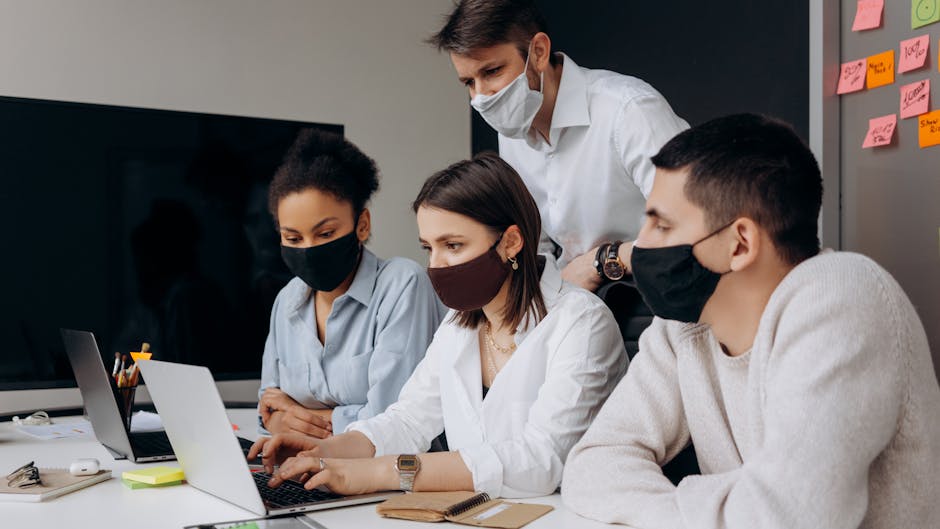Strategies for Effective Team Collaboration
Did you know that teams that collaborate effectively can increase productivity by up to 25%? It’s true! Working together well isn’t just a nice idea; it’s essential for getting things done. In this article, we’ll explore key strategies that can help you and your team work better together.
What is Effective Team Collaboration?

Effective team collaboration means that all members of a team work together smoothly. They share ideas, communicate openly, and support each other to reach common goals. Think of it like playing in a band. Each musician has a role, but together they create beautiful music.
Why is Collaboration Important?

Collaboration boosts creativity and problem-solving. When team members share different perspectives, they can come up with innovative solutions. Research shows that diverse teams make better decisions 87% of the time. Plus, working together can improve morale and build stronger relationships.
How Can Teams Collaborate Effectively?

Lets break down some effective strategies for team collaboration that you can implement right away.
1. Set Clear Goals
what’s the first step to effective collaboration? Setting clear goals! When everyone knows what they’re working toward, it aligns efforts and reduces confusion.
- Define short-term and long-term goals.
- Make goals specific, measurable, achievable, relevant, and time-bound (SMART).
For example, instead of saying, We need to improve sales, say, We aim to increase sales by 15% in the next quarter.
2. Foster Open Communication
How can you improve communication within the team? Encourage open dialogue. Create an environment where everyone feels comfortable sharing ideas and feedback.
- Use tools like Slack or Microsoft Teams for quick chats.
- Hold regular team meetings to discuss progress and challenges.
Imagine a weekly check-in where each member shares one success and one challenge. This builds trust and keeps everyone in the loop.
3. Embrace Diverse Perspectives
Why is it important to embrace diversity? Different viewpoints lead to better ideas. Encourage input from all team members, regardless of their role.
- Hold brainstorming sessions where all ideas are welcome.
- Consider rotating roles in discussions to get fresh perspectives.
For instance, if you’re working on a marketing campaign, include team members from sales, product development, and customer support. Each will bring a unique viewpoint that can enhance the project.
4. Utilize Collaborative Tools
What tools can help with collaboration? There are many online tools designed to make teamwork easier.
- Trello: Great for project management.
- Google Docs: Perfect for real-time document editing.
- Zoom: Ideal for virtual meetings.
These tools help team members stay connected, whether they’re in the same office or working remotely.
How to Build Trust Within the Team?

Trust is a cornerstone of effective collaboration. How can you foster trust among team members? Here are some strategies:
- Encourage vulnerability. Share your own challenges.
- Recognize and celebrate each others successes.
- Be consistent in your actions and words.
For example, if someone helps you on a project, publicly acknowledge their contribution. This reinforces a culture of support.
What Role Does Leadership Play in Team Collaboration?
Leadership greatly influences collaboration within a team. Good leaders set the tone and model effective behaviors. Heres how leaders can promote collaboration:
- Provide clear direction and support.
- Encourage team members to take initiative.
- Be approachable and available for questions and discussions.
When leaders practice what they preach, it inspires team members to follow suit. A united front creates a more collaborative environment.
5. Encourage Feedback and Reflection
Why is feedback important? It helps teams improve continuously. Regularly seek feedback on processes, meetings, and projects. This creates a culture of learning.
- Conduct surveys to gauge team satisfaction.
- Hold retrospectives after projects to discuss what went well and what could improve.
Think of it as a sports team reviewing their game after each match. They analyze performances to prepare better for the next game.
How to Manage Conflicts Constructively?
Conflicts are natural in any team. But how they’re handled makes a big difference. Here are steps to manage conflicts effectively:
- Address issues promptly before they escalate.
- Encourage open dialogue to understand different viewpoints.
- Work together to find mutually beneficial solutions.
For example, if two team members disagree on a project direction, facilitate a discussion where each can express their thoughts and find common ground.
What Can You Do to Maintain Team Spirit?
Keeping team spirit high is essential for collaboration. How can you maintain enthusiasm and energy? Here are a few ideas:
- Organize team-building activities, like outings or games.
- Celebrate achievements, both big and small.
- Encourage social interactions during breaks.
Consider a monthly team lunch where everyone can relax and connect outside of work tasks. These moments foster camaraderie and strengthen ties.
Conclusion: What Are Your Key Takeaways?
Effective team collaboration is not just a buzzword; it’s a necessity for success. By setting clear goals, fostering open communication, and embracing diversity, teams can achieve amazing results.
Keep in mind that trust, leadership, and constructive conflict management are crucial components. Regular feedback and a focus on team spirit can help maintain a collaborative environment.
Start implementing these strategies today and watch your team’s collaboration thrive! Remember, the goal is to work smarter, not harder. For more insights, check out our related post on Improving Team Communication.
Now, go out there and create your own symphony of teamwork!



